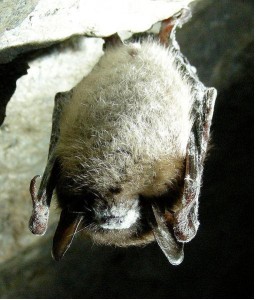MONDAY, 28 FEBRUARY 2011
The disease, known as white-nose syndrome, is believed to be caused by the fungus Geomyces destructans. This fungus thrives in the low temperatures and humid environments of cave systems that bats choose for hibernation. For long periods in the winter the body temperature of hibernating bats may be only marginally above the ambient temperature, making their skin vulnerable to growth of the fungus. Researchers from the University of California in Davis studying the disease suggest that infections on the wings may directly cause mortality by damaging the skin, but infection also causes more frequent arousals from hibernation [1] . This means that bats with WNS use up their fat reserves prematurely and die before their food sources become available. In some colonies the mortality rate has been as high as 95%. Treatment of infected bats, as well as monitoring the spread of the disease and understanding its transmission, will be vital to saving vulnerable species.In North America, the bat species so-far affected include the endangered gray bat (Myotis grisescens), the little brown bat (M. lucifugus) and northern long-eared bat (M. septentrionalis) among others. The disease has caused unprecedented reductions in the abundance of hibernating species and it is estimated that about one million bats have died from WNS. G. destructans infections have also been found in European bats but so far there have been no reported mortalities.
Written by Robert Jones

